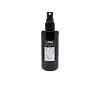What's inside
What's inside
 Key Ingredients
Key Ingredients

 Benefits
Benefits

 Concerns
Concerns

 Ingredients Side-by-side
Ingredients Side-by-side

Water
Skin ConditioningHamamelis Virginiana Water
AstringentAlcohol
AntimicrobialPropanediol
SolventVp/Va Copolymer
Glycereth-26
Humectant1,2-Hexanediol
Skin ConditioningMethylpropanediol
SolventPEG-40 Hydrogenated Castor Oil
EmulsifyingSuccinic Acid
BufferingNiacinamide
SmoothingPanthenol
Skin ConditioningCaprylhydroxamic Acid
Disodium EDTA
Parfum
MaskingStephania Tetrandra Root Extract
Skin ConditioningAloe Barbadensis Leaf Extract
EmollientZinc PCA
HumectantResveratrol
AntioxidantBisabolol
MaskingMalachite Extract
AntioxidantWater, Hamamelis Virginiana Water, Alcohol, Propanediol, Vp/Va Copolymer, Glycereth-26, 1,2-Hexanediol, Methylpropanediol, PEG-40 Hydrogenated Castor Oil, Succinic Acid, Niacinamide, Panthenol, Caprylhydroxamic Acid, Disodium EDTA, Parfum, Stephania Tetrandra Root Extract, Aloe Barbadensis Leaf Extract, Zinc PCA, Resveratrol, Bisabolol, Malachite Extract
Water
Skin ConditioningButylene Glycol
HumectantAlcohol Denat.
AntimicrobialPhenoxyethanol
PreservativeCaprylyl Glycol
EmollientAcrylates Copolymer
Xylitylglucoside
HumectantAnhydroxylitol
HumectantPEG-40 Hydrogenated Castor Oil
EmulsifyingXylitol
HumectantEthylhexylglycerin
Skin ConditioningDisodium EDTA
Carbomer
Emulsion StabilisingParfum
MaskingTriethanolamine
BufferingTremella Fuciformis Sporocarp Extract
AntioxidantAloe Barbadensis Leaf Extract
EmollientWater, Butylene Glycol, Alcohol Denat., Phenoxyethanol, Caprylyl Glycol, Acrylates Copolymer, Xylitylglucoside, Anhydroxylitol, PEG-40 Hydrogenated Castor Oil, Xylitol, Ethylhexylglycerin, Disodium EDTA, Carbomer, Parfum, Triethanolamine, Tremella Fuciformis Sporocarp Extract, Aloe Barbadensis Leaf Extract
Ingredients Explained
These ingredients are found in both products.
Ingredients higher up in an ingredient list are typically present in a larger amount.
Aloe Barbadensis Leaf Extract is an extract of the leaves of the aloe, Aloe barbadensis, Liliaceae.
Aloe is one of the most well-known natural soothing ingredients, and for good reason. It’s full of water and has a cooling, calming effect on the skin, especially when it’s sunburned, itchy, or irritated. Aloe also helps your skin stay hydrated and smooth by mimicking what healthy skin naturally produces. On top of that, it contains vitamins and nutrients that support skin recovery.
It doesn’t protect you from the sun, but it can help your skin bounce back after too much time in it.
Let’s get into the details:
Aloe contains antioxidant Vitamins A, C, and E, which help fight off free radicals (unstable molecules from things like pollution that can damage your skin).
It’s also rich in polysaccharides, which are natural sugars that help hydrate the skin by acting like the skin’s own moisturizing agents. These, along with other sugars like monosaccharides, help form a protective barrier that locks in moisture.
Aloe works as both a humectant and an emollient. That means it draws water into the skin (humectant) and helps trap it there (emollient), making it an effective natural moisturizer.
You’ll also find a mix of other skin-supporting ingredients in aloe, including folic acid, choline, calcium, amino acids, fatty acids, and even Vitamin B12.
Out of the 420+ species of aloe, Aloe barbadensis is the most widely used in skincare products thanks to its gentle yet effective properties.
There are over 420 species of aloe but Aloe Barbadensis is the most commonly used for topical products.
Learn more about Aloe Barbadensis Leaf ExtractDisodium EDTA plays a role in making products more stable by aiding other preservatives.
It is a chelating agent, meaning it neutralizes metal ions that may be found in a product.
Disodium EDTA is a salt of edetic acid and is found to be safe in cosmetic ingredients.
Learn more about Disodium EDTAParfum is a catch-all term for an ingredient or more that is used to give a scent to products.
Also called "fragrance", this ingredient can be a blend of hundreds of chemicals or plant oils. This means every product with "fragrance" or "parfum" in the ingredients list is a different mixture.
For instance, Habanolide is a proprietary trade name for a specific aroma chemical. When used as a fragrance ingredient in cosmetics, most aroma chemicals fall under the broad labeling category of “FRAGRANCE” or “PARFUM” according to EU and US regulations.
The term 'parfum' or 'fragrance' is not regulated in many countries. In many cases, it is up to the brand to define this term.
For instance, many brands choose to label themselves as "fragrance-free" because they are not using synthetic fragrances. However, their products may still contain ingredients such as essential oils that are considered a fragrance by INCI standards.
One example is Calendula flower extract. Calendula is an essential oil that still imparts a scent or 'fragrance'.
Depending on the blend, the ingredients in the mixture can cause allergies and sensitivities on the skin. Some ingredients that are known EU allergens include linalool and citronellol.
Parfum can also be used to mask or cover an unpleasant scent.
The bottom line is: not all fragrances/parfum/ingredients are created equally. If you are worried about fragrances, we recommend taking a closer look at an ingredient. And of course, we always recommend speaking with a professional.
Learn more about ParfumPeg-40 Hydrogenated Castor Oil is derived from castor oil and polyethylene glycol (PEG). It is used as a emollient and emulsifier.
As an emulsifier, it helps prevent ingredients from separating. It also helps make the other ingredients more soluble; it is often used to solubilize fragrances. This increases spreadability and elongates shelf life in a product.
Emollients help soothe and soften the skin. They do this by creating a protective film on your skin. This barrier helps trap moisture and keeps your skin hydrated. Emollients may be effective at treating dry or itchy skin.
This ingredient may or may not be vegan, depending on the source.
Peg-40 Hydrogenated Castor Oil may not be fungal-acne safe. We recommend speaking with a professional if you have any questions or concerns.
Learn more about PEG-40 Hydrogenated Castor OilWater. It's the most common cosmetic ingredient of all. You'll usually see it at the top of ingredient lists, meaning that it makes up the largest part of the product.
So why is it so popular? Water most often acts as a solvent - this means that it helps dissolve other ingredients into the formulation.
You'll also recognize water as that liquid we all need to stay alive. If you see this, drink a glass of water. Stay hydrated!
Learn more about Water